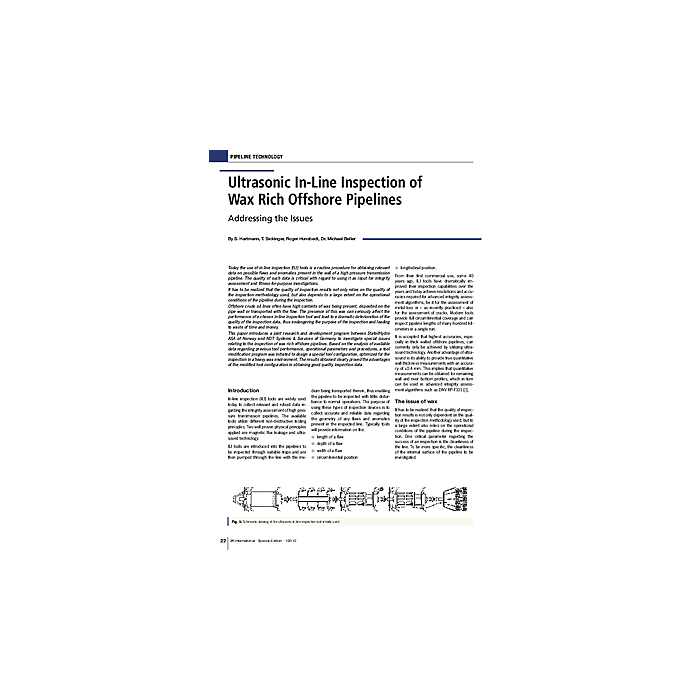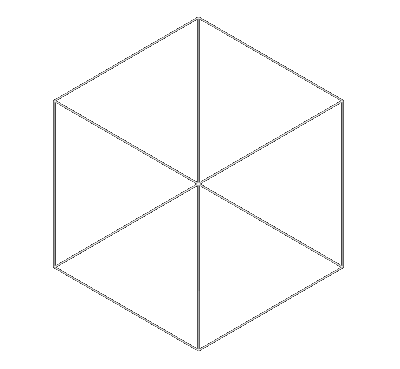Ultrasonic In-Line Inspection of Wax Rich Offshore Pipelines
4,90 €
Auf Lager
Artikelnummer
01252_2010_SP1_04
Addressing the Issues
Today the use of in-line inspection (ILI) tools is a routine procedure for obtaining relevant data on possible flaws and anomalies present in the wall of a high pressure transmission pipeline. The quality of such data is critical with regard to using it as input for integrity assessment and fitness-for-purpose investigations. It has to be realized that the quality of inspection results not only relies on the quality of the inspection methodology used, but also depends to a large extent on the operational conditions of the pipeline during the inspection. Offshore crude oil lines often have high contents of wax being present, deposited on the pipe wall or transported with the flow. The presence of this wax can seriously affect the performance of a chosen inline inspection tool and lead to a dramatic deterioration of the quality of the inspection data, thus endangering the purpose of the inspection and leading to waste of time and money. This paper introduces a joint research and development program between StatoilHydro ASA of Norway and NDT Systems & Services of Germany to investigate special issues relating to the inspection of wax rich offshore pipelines. Based on the analysis of available data regarding previous tool performance, operational parameters and procedures, a tool modification program was initiated to design a special tool configuration, optimized for the inspection in a heavy wax environment. The results obtained clearly proved the advantages of the modified tool configuration in obtaining good quality inspection data.
| Autoren | S. Hartmann/T. Sickinger, Roger Hunsbedt, Michael Beller |
|---|---|
| Erscheinungsdatum | 30.04.2010 |
| Format | |
| Zeitschrift | 3R - Special 1 2010 |
| Verlag | Vulkan-Verlag GmbH |
| Sprache | English |
| Seitenzahl | 5 |
| Titel | Ultrasonic In-Line Inspection of Wax Rich Offshore Pipelines |
| Untertitel | Addressing the Issues |
| Beschreibung | Today the use of in-line inspection (ILI) tools is a routine procedure for obtaining relevant data on possible flaws and anomalies present in the wall of a high pressure transmission pipeline. The quality of such data is critical with regard to using it as input for integrity assessment and fitness-for-purpose investigations. It has to be realized that the quality of inspection results not only relies on the quality of the inspection methodology used, but also depends to a large extent on the operational conditions of the pipeline during the inspection. Offshore crude oil lines often have high contents of wax being present, deposited on the pipe wall or transported with the flow. The presence of this wax can seriously affect the performance of a chosen inline inspection tool and lead to a dramatic deterioration of the quality of the inspection data, thus endangering the purpose of the inspection and leading to waste of time and money. This paper introduces a joint research and development program between StatoilHydro ASA of Norway and NDT Systems & Services of Germany to investigate special issues relating to the inspection of wax rich offshore pipelines. Based on the analysis of available data regarding previous tool performance, operational parameters and procedures, a tool modification program was initiated to design a special tool configuration, optimized for the inspection in a heavy wax environment. The results obtained clearly proved the advantages of the modified tool configuration in obtaining good quality inspection data. |
Eigene Bewertung schreiben


